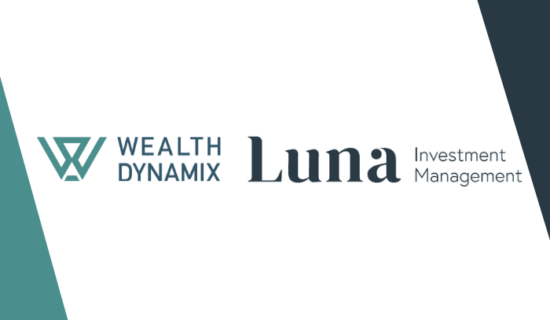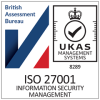Client onboarding within some wealth management firms is an unfortunate tale of disconnected systems and manual processes, data validation and loss, poor client relationship management and operational risk, writes Johnny Beloe, Director of Pre-Sales, Wealth Dynamix.
The traditional view of onboarding is to take an unknown client that is not active with any of the firm’s products and guide them through all the necessary steps from an operational, regulatory and client-considered perspective. A more rounded view of onboarding is that it concerns the alignment of a firm’s products and services with a client’s needs, goals, time-horizon, risk attitude, tolerance for loss, etc.
Differing perspectives is just one of the many problems faced by the wealth management industry that have beset clients in their onboarding experience. Other factors include a reliance on manual processes and a lack of technology in risk profiling.
Below I highlight five of the challenges posed to clients, advisors and wealth management firms by the current end-to-end onboarding journey.
1. Documentation
Documentation is, of course, a key element in the onboarding process, but even those documents will vary by country, product and legal structure such as trust, charity or corporate entity. Many investors view this documentation as the extent of onboarding and even some technology providers are simply selling the rules sets around documents and describing this as ‘onboarding’.
2. Manual processes
Compounding the problem, client onboarding involves a high proportion of manual processes that generate ample opportunity for errors, in addition to operational and compliance risks.
The above limitations impact on the firm’s ability to onboard smoothly and efficiently, which then in turn affects the client’s experience, as well as conversion rates, wallet share attained and so on. The result of these limitations has been well documented.
Only 2% of front office professionals believe their firm’s onboarding process is entirely automated, whilst 19% believe it to be entirely manual.
3. Ineffective suitability
Wealth management firms must bear in mind the FCA requirements applicable to firms providing investment advisory and discretionary portfolio management services, when such firms are assessing the suitability of the advice they give to clients. A good suitability process will engage and educate the client, then set and manage expectations. The best approach will:
- educate the client on risk in the context of their portfolio and objectives
- create a common understanding between the manager / advisor and the client as to what risk means
- link the client profile directly to the firm’s range of investment propositions
- be delivered through an end-to-end process that integrates with CRM and front office systems.
This kind of methodical approach to suitability has not been prevalent in the wealth industry, with more inconsistent processes being commonplace.
4. Lack of technology in risk profiling
Risk profiling is fundamental to compliance and is a complex, often lengthy process. Each step should be recorded, with all key documents autosaved to the firm’s CRM or DMS, ensuring that there is a full audit trail. If the client specifies that certain investment types are undesirable, the system should automatically determine where there are problems in the portfolio. This is the role normally of a proposal generation tool or a proposed portfolio in a Portfolio Management System.
A CLM may deal with the output of the assessment made by that tool within the overarching workflow, however. Unfortunately, many wealth firms do not deploy this kind of technology to facilitate the risk profiling process.
5. E-signatures unplugged
The focus for the wealthtech industry has traditionally been on the stage where the advisor sends documents to the client digitally, for them to review and sign. From a client experience perspective, removing the ‘friction’, improving the review cycle and signing documents electronically will convince many clients that their wealth management firm is deploying ‘digital onboarding’.
What this situation often masks, however, is that those tools that handle e-signatures or document routing are not plugged into a central system that orchestrates the entire onboarding procedure. The ‘tools’ often involve people manually producing documents, putting them into a workflow application and sending them to the client. The documents may not be loaded onto any central system and at the annual client review the advisor must send the same documents for approval once again.
Summary
Onboarding is the perfect opportunity to provide a client with a first-class experience – but for many it feels like an exceedingly protracted and purely transactional data-gathering exercise. This can impact client trust, investment funding and even client retention. Forward thinking wealth firms are now beginning to look carefully at these critical processes.
If you recognise some of the challenges outlined in this article, now could be the time to take some decisive steps to improve the onboarding experience for the future.
Essential reading for key decision-makers
To summarise, a lack of knowledge concerning the common mistakes wealth management firms make in the area of onboarding can lead to misguided decisions, costly u-turns, siloed systems, and, worse, a disjointed client journey.
Therefore, this topic makes for essential reading for CLM decision-makers, especially for those in the role of Chief Operations Officer, Head of Client Service, Head of Relationship Management, or Head of CRM/Onboarding/KYC. Relationship managers and marketing specialists keen to raise their game in line with the expectations of contemporary clients will also find it a helpful resource.
Available for download now
Our Defining Onboarding whitepaper is available for download now. If you feel your clients could benefit from a better onboarding experience, now could be the time to take some decisive steps to improve it for the future.





